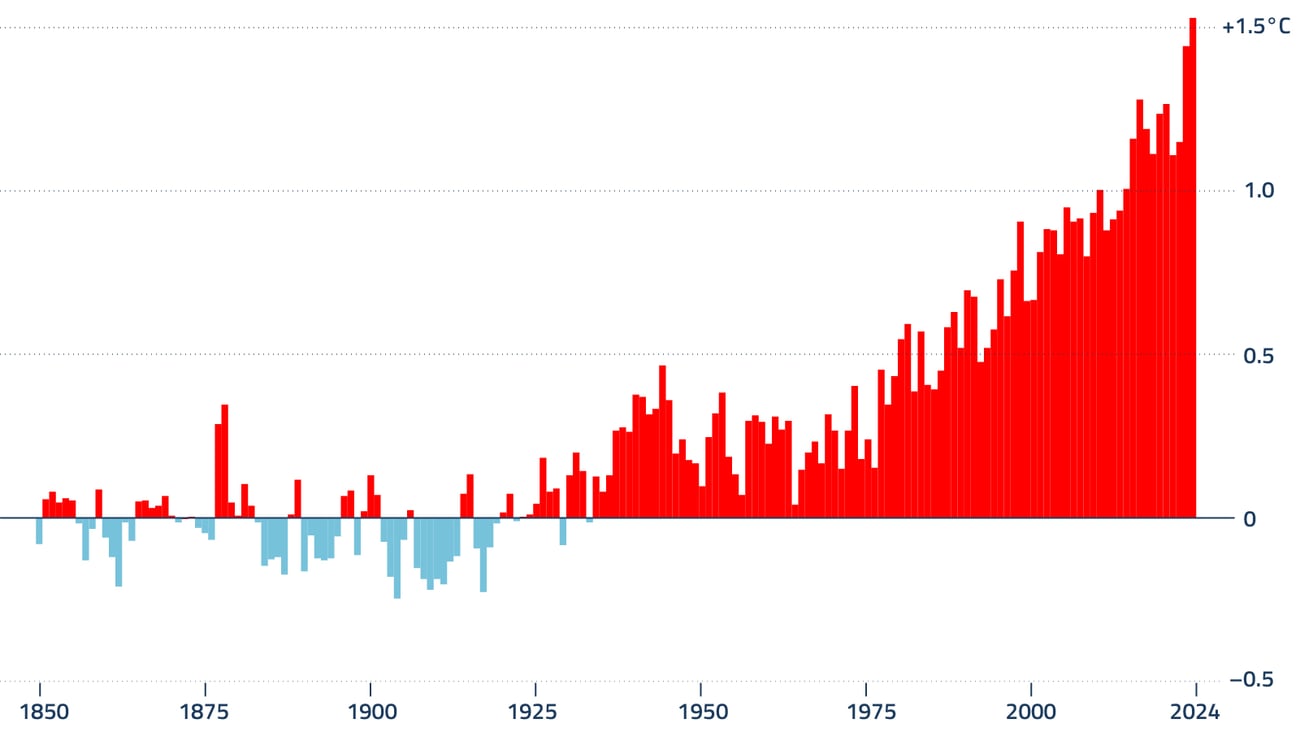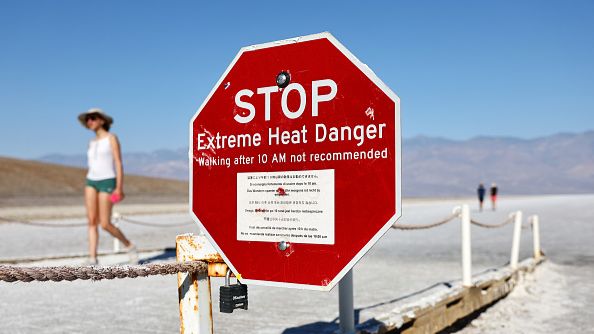|
|
Dear ,
It’s been a busy start to the year for climate news, and the field of SRM has been no exception.
The World Meteorological Organization confirmed that 2024 was the first calendar year to exceed 1.5°C of warming. The climate community is also reacting to the Trump administration's immediate actions and announcements around fossil fuels and the Paris Agreement. In two news reaction pieces, we asked experts what this means for SRM – find their perspectives below.
There were several significant new research articles and commentaries on SRM this month, including two major studies putting the side effects of stratospheric aerosol injection (SAI) into context and others reflecting on the challenges of governance.
We hope you’re finding these monthly updates useful. If you’d like to stay up-to-date between newsletters, you can sign up for our weekly bulletin. This is a more comprehensive but less curated round-up of development, aimed at professionals in the field. You can also connect with us on social media – LinkedIn / Bluesky / X.
Thank you for reading.
-The SRM360 Team
|
| Subscribe to the Weekly Bulletin
|
|
|
New From SRM360 |
|
|
Global average temperature relative to 1850–1900
|

|
Note: Average of NOAA, Berkeley Earth, and Hadley Centre (HadCRUT5) data
Source: Met Office Hadley Centre
|
|
|
|
Climate experts Govindasamy Bala, Cynthia Scharf, Simone Tilmes, and Claudia Wieners share their perspectives on what 2024 crossing 1.5°C of warming means for SRM.
|
|
|
|
|
|
|
| More SRM360 Content
|
|
|
In Conversation |

|
2024 was the hottest year on record and a new US administration takes office. In our news roundup, Pete Irvine discusses these and other recent SRM-relevant developments with experts.
Listen at srm360.org or on your preferred podcast platform.
|
|
|
|
|
|
|
SRM Academic Highlights |
 |
Getty Images
|
Under a not so white sky
Lemon et al. simulated the effects of SAI on the appearance of the sky under different background pollution conditions. The team found that most people would be unable to detect changes to the sky when the sun is high, but changes at twilight could be noticeable to many.
Could SAI save lives?
Harding et al. used climate models and econometrics to compare the effects of SAI on heat-related mortality against its non-climate side effects. The team found that using SAI to cool the world by 1°C could prevent more than 400,000 deaths annually by 2080, outweighing SAI’s side effects on air pollution and the ozone layer by 13 to 1.
SRM governance: research-first or non-deployment?
McLaren and Corry, writing in the journal Science, reflect on their experiences during SRM discussions at the United Nations Environment Assembly. They argue that diverging geopolitical interests, rather than a lack of knowledge, were behind the failure to reach any agreement. They also argue that the “research-first approach” to SRM governance should be abandoned in favour of pursuing a non-deployment agreement.
Is SRM inevitable?
A special issue of the journal Ethics and International Affairs published three articles on SRM: Oomen argues that the (flawed) logics of today’s climate politics may make SRM inevitable, while Young questions whether the crumbling international order can realise ethical governance of SRM, and VanDeVeer et al. lay out three pathways to securing a non-use agreement for SRM.
Beyond the lab: transparency in outdoor research
Jack Stilgoe presented his perspective on geoengineering experiments outside of the lab in the journal Science. He argues that outdoor experiments require additional oversight and transparency beyond those for lab experiments to ensure potentially flawed experimental design does not damage the reputations of entire fields of research.
|
|
|
Community and Events |
 |
Getty Images
|
The consequences of a Trump administration on SRM
Shuchi Talati from The Alliance for Just Deliberation on Solar Geoengineering (DSG) discusses escalating climate impacts and the potential for SRM against the political backdrop of a second Trump administration. She notes: a “deregulated environment could create fertile ground for private-sector actors and venture capitalists to dominate SRM research and potential deployment”.
Interactive roadmap for research
SilverLining released an interactive five-year roadmap outlining the research needed to understand and address near-term climate risks. The roadmap “describes objectives and activities designed to fill these critical gaps to support scientific assessment”. Priorities include strengthening observations of aerosols and other atmospheric factors, improving the accuracy of climate models, and developing governance mechanisms to support informed decision-making.
Major risks and open questions
The Swiss Academy of Sciences (SCNAT) released a report on the risks and unknowns of exploring climate intervention through SRM. The Academy emphasises the need for more research as well as robust international regulation to ease geopolitical tensions and potential misuse.
Expanding SRM knowledge in India
A collaborative workshop on SRM geoengineering scenarios brought together researchers and experts from The Energy and Resources Institute (TERI), DSG, the University of California, and Scripps Institute of Oceanography. Attendees agreed that robust modelling, collaboration between scientific and policy communities, and engagement with global stakeholders are essential to ensure responsible decision-making.
DEGREES seeks to expand SRM research funding
The DEGREES Initiative is seeking to support SRM research in more countries across the Global South. In their sponsor-based call for proposals, DEGREES seeks to fund SRM research sponsored by an established principal investigator. DEGREES encourages eligible researchers to apply for these research funds whether or not they have identified a sponsor.
The SRM landscape in 2025
DSG updated their report “The Solar Geoengineering Ecosystem: Key Actors Across the Landscape of the Field”. Authored by Wil Burns and Shuchi Talati, the report provides an overview of the field’s expanding ecosystem of actors.
|
|
|
|
|
|
In the Media |
 |
Getty Images
|
It’s official – 2024 was the hottest year on record
The World Meteorological Organization (WMO) confirmed that 2024 was warmest year on record – exceeding 1.5°C above pre-industrial level: Copernicus: 2024 is the first year to exceed 1.5°C above pre-industrial level (Copernicus), What we learned from the hottest year on record (Bloomberg), Climate stripes updated for hottest year on record (BBC).
Health benefits of a cooler world
The paper by Harding et al. was positively received by media outlets, which noted that fewer climate-related deaths would occur in hotter, poorer regions of the world, stressing the benefits that 1°C of cooling could bring: Solar geoengineering could save 400,000 lives a year (Phys.org), Solar geoengineering could save up to 400,000 lives each year (Earth.com).
Predictions for SRM in 2025
Several articles speculated that SRM discussions could receive increased attention in the new year: Is solar geoengineering research having its moment? (New Scientist), Is it time to talk seriously about geoengineering? (E&E News), Global warming is speeding up. Another reason to think about geoengineering (The Economist).
|
|
|
Join Us on Social Media |
|
|
|
|
Want even more SRM content?
Subscribe to our weekly bulletin.
Receive this newsletter from a friend and want it in your inbox?
Subscribe.
|
|
|
| Share your feedback
|
|
|
 |
Copyright (C) 2024 SRM360. All rights reserved.
|
|
|
|